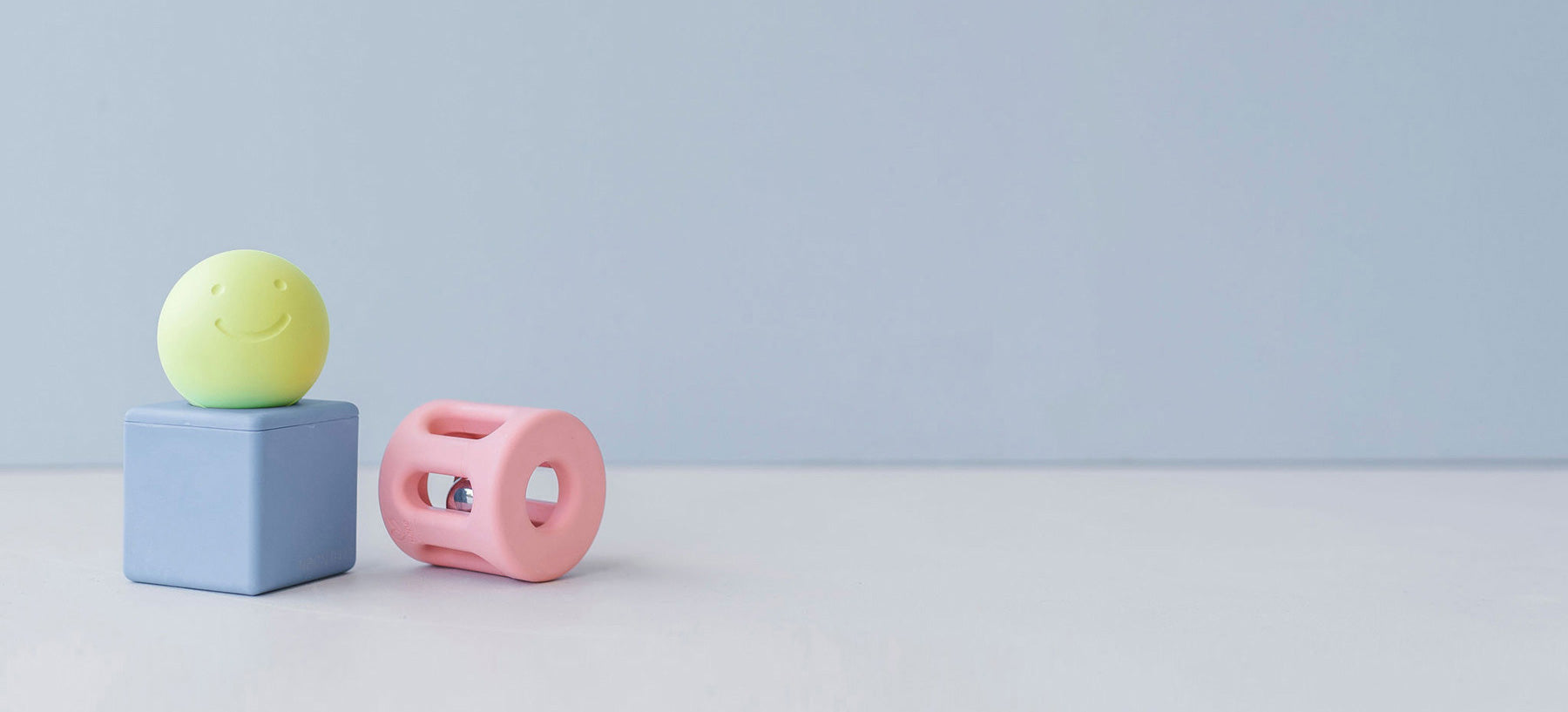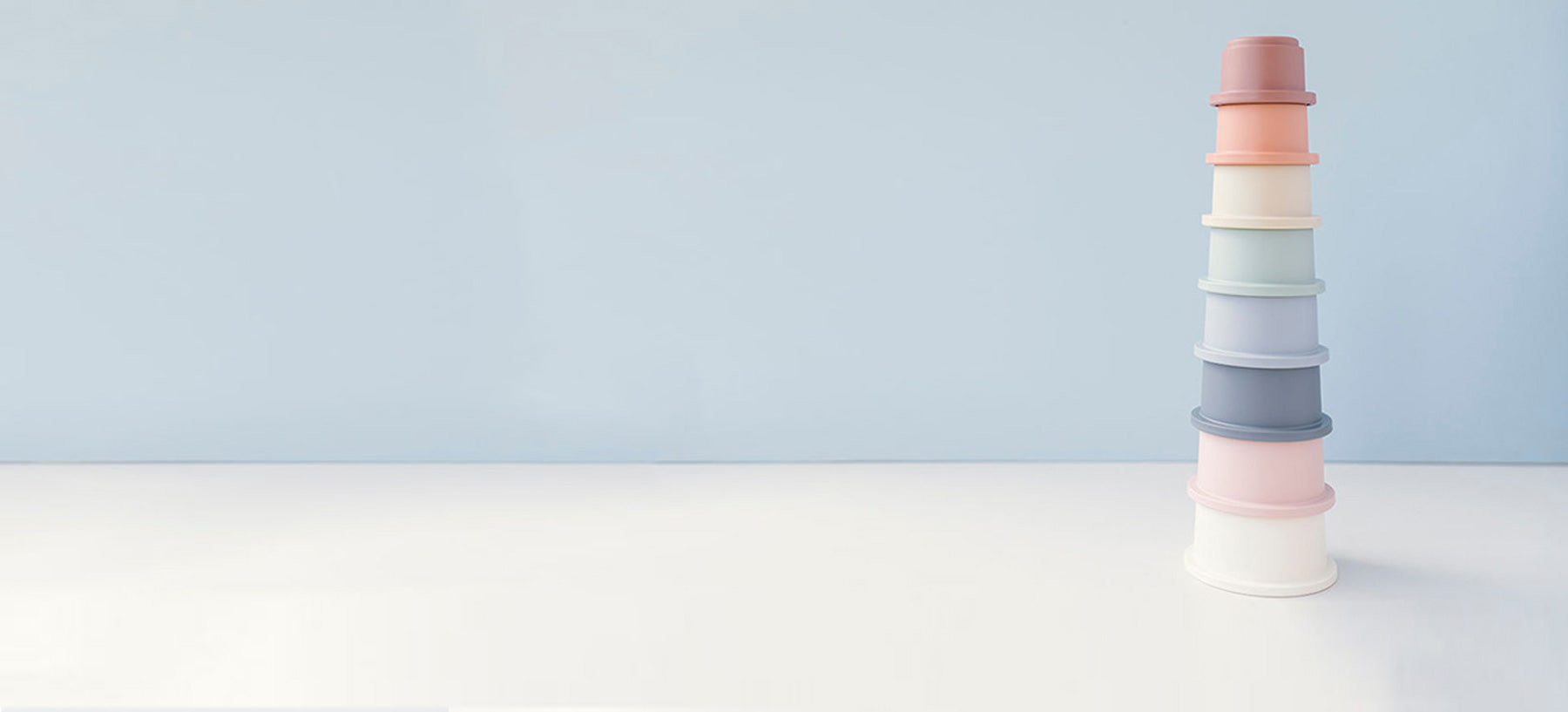Why do babies need stimulation?
There are so many things to learn and navigate when little ones join the world. They rely on their parents and caregivers for every basic need. Going from the womb where they had everything on demand, fed when hungry, with a nice warm consistent temperature to the real-world, where the noises are loud, the lights are bright, they have to ask for food, and are constantly exposed to new environments. Your little one may be crying because they are hungry, or tired, or because they are dirty. Or they may be crying because they are overwhelmed by this highly-stimulating new world.

Babies and toddlers rely on their parents or caregivers to provide them with the right stimulation, at the right time. While our little one’s brains are developing at rapid pace, they are not yet able to regulate their own senses. Each day is filled with new sensory information that they are processing. They struggle to know when their bodies have had enough excitement, and need to rest, and they can easily become overstimulated. Meltdown time!
To understand why babies need stimulation, firstly, we should look at the regulation cycles that a baby will go through in a day. We use different sensations to excite or calm down the nervous system, and we need to provide the right input at the right time for our little ones. Helping to understand the cycle of calm to alert helps to create a routine, or rhythm, in your day. This helps to avoid overstimulation and under-stimulation. A routine, or rhythm, helps our little ones to better prepare for what is to come, whether it’s playtime or a calming bath before bed.
Stage one: Drowsy stage
- This is when your baby has just woken up. They are not focusing on much, and they are not wanting too many senses engaged. This is a good time for a soft and quiet cuddle or a feed with limited sensory experiences.
Stage two: Calm-alert stage
- The next stage is when they are fully awake and taking in surroundings and sensory input. They might not be quite ready for movement and play but they are ready for social interaction. This is a great time to focus on one thing, it could just be talking to your baby, engaging with them, using sounds, words, quiet songs and facial expressions. Your baby will be taking in everything you say, so this is precious one-on-one time. The best kind of face time!
Stage three: Active-alert phase
- Your baby is fully awake. It’s time to play! They will show they are in this phase by moving, wriggling, and being active. This is the perfect time to use your PlayLogy toys and to optimise learning. Show them how to play with our educational toys and give them time to interact on their own. For a newborn baby, this time is very short and will increase as a baby gets older.
- Babies love to play, but as we mentioned, they lack self-regulation, which is the ability to know when they have had enough. As they struggle to regulate themselves, this phase is frequently followed by a crying phase as the sensory overload is too much for them to process.
- Look out for the early cues, as they start fussing or becoming agitated. You can remove the toys slowly, picking them up, cuddling them, removing background noise, or taking them to a new environment that is quieter or darker. It’s impossible to get this right every time!
Stage four: Drowsy phase
- It’s time for sleep again. In preparation for sleep, take your baby to a calm environment for them to wind down. Like adults, babies need a calm environment to fall asleep easily.
The regulation cycle will provide you with a deeper understanding of what stimulation your little one needs at certain times. Each stage is equally important. As your baby grows, they will spend more time in certain stages and less time in others.
After a few weeks or months, you will get an idea of how long your baby can be in the active-alert phase before they are overstimulated. You can maximise the stimulation window with the right learning; the right play, at the right age. You can also identify the key time to finish your playtime activity, and slowly begin to wind your little one down.

What toys give the right stimulation and are good developmental toys for newborns?
PlayLogy has worked with experts to curate our age-specific PlayBoxes from 0-24 months.
For a newborn, their vision is developing and they struggle to see when one object starts and another finishes. They can see black, white and shades of grey. This is why high contrast, black and white toys are best for this age.
It’s very easy to create an overstimulating environment for our babies. As adults, we are used to using many senses at once, but our little ones are not. Take one or two items out of your PlayBox at a time. Create a play space with minimal toys and noise to begin with so that they can focus on the toy that is in front of them.
Our Dream & Discover PlayBox includes the following, carefully curated by experts for your newborn’s developing brain:
- Black and white book
- Sensory cube
- Round rattle
- Activity pendants
- Black and white cards
A stylish wooden baby gym is available as an add-on to the Dream & Discover PlayBox. A play-gym is a useful resource for young babies. Baby play gyms encourage babies to use and develop the muscles in their neck, back, arms, legs and stomach. They allow babies space to play and their tiny hands can reach for the pendants, building hand-eye coordination and their gross motor skills.

What causes overstimulation?
As we have mentioned, it’s important to know babies, toddlers and children can all be easily overstimulated as they have an immature nervous system. They are still learning which sensory information isn’t relevant and what are considered ‘background’ sensory sensations.
Key causes for overstimulation:
- Too many sensations. Sensations refer to sensory input from any of our senses and most often occur if all are exposed for a long period of time. This is the main cause of overstimulation. Think of a loud environment, with bright lights and full of colour
- Being overtired or tired
- Being out of routine or rhythm and being unable to prepare for their next sensations.
Babies will process everything they see, hear, feel – they don’t know what sensory elements to focus on so they are easily overloaded. Crying is the only way our little ones know how to communicate. When your baby is in this phase, they will need a calming input from you to help them settle, like rocking, patting, carrying and gentle reassurance.
Can a baby be under-stimulated?
Yes, babies are curious at heart and will want to explore the world around them. If they aren’t given enough sensory stimulation, they may fuss and cry to get attention. If they are in the same environment for a prolonged period without any stimulation or play, they may cry out for more. You can add something new to the environment, a new toy or rattle, and if they respond well to this, it is clear they are under-stimulated. Under-stimulation prevents learning, as babies learn through exploration – if they aren’t given the opportunity to see, hear, taste, smell or touch, it will be more difficult for them to meet their developmental, cognitive and social milestones.
How do I know how long my little one should be awake for?
Please refer to the below chart as a guideline only. Each and every little person is unique!
|
Age |
Awake time between sleep |
|
0-2 months |
45 minute – 1 hour |
|
2-4 months |
90 minutes |
|
4-6 months |
2.5 hours |
|
6-9 months |
3 hours |
|
9-12 months |
4 hours |
As we mentioned, even if you understand the regulation cycle it is impossible to get it right every time, however by knowing what to expect and knowing the ways to prevent overstimulation and under-stimulation, you can maximise opportunities for learning and play.
Let the fun and games begin! Shop PlayBoxes now.
References:
- Case-Smith, J. O'Brien, J. (2010). Occupational therapy for children. Missouri: Mosby Elsevier
- Eisenberg,A. Hathaway,Sandee. Murkoff,H. (2004). What to expect, the first year. London: Simon & Schuster UK Ltd
- Faure, M. (2010). Baby Sense. Welgemoed:Metz Press




